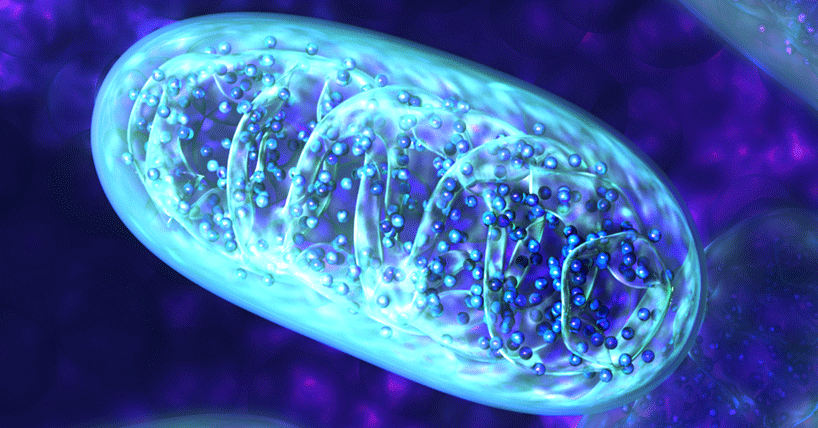Three new mito diseases id
Genetic basis of 3 mitochondrial diseases identified via new approach
Published on: 25 May 2022
New understanding of how mitochondria’s hundreds of proteins work together to generate power and perform other functions offers a promising path to better diagnose and treat mitochondrial disease.
When something goes wrong in mitochondria, the tiny organelles that power our cells, it can cause a vast range of symptoms such as poor growth, muscle weakness, seizures, developmental and cognitive disabilities and vision problems. Such mitochondrial dysfunction can be caused by a defect in any of the estimated 1,150 proteins that make up the mitochondria, often making it difficult to identify the faulty protein and treat the condition. Now scientists have developed a new approach that allows them to better understand the role of each protein and have successfully used this to identify the genetic cause of three new mitochondrial diseases.
The findings are published today in Nature. Co-author Professor Robert Taylor, Professor of Mitochondrial Pathology at the Wellcome Centre for Mitochondrial Research, Newcastle University who is also Head of the NHS Highly Specialised Mitochondrial Diagnostic laboratory at Newcastle Hospitals NHS Foundation Trust said: “In spite of the increasing recognition of disease pathology that is underpinned by mitochondrial problems, a major hurdle in diagnosing and treating these conditions is that we don’t yet know the function of many of the hundreds of proteins found in mitochondria or understand their fundamental role in biology. This important research begins to address that.”

CRISPR-Cas9 analysis
Colleagues at Washington University in St. Louis and the University of Wisconsin–Madison, systematically analyzed dozens of mitochondrial proteins of unknown function with the new approach that involves using CRISPR-Cas9 technology to remove single genes from human cells grown in the lab. By removing different genes in these cell lines, they were able to show that 50 of the missing genes coded for mitochondrial proteins of unknown function and 66 coded for mitochondrial proteins with known function.
Further examination of these cell lines, which involved looking at how the mitochondria worked when the gene was missing, facilitated the collection of data to develop a new digital platform to analyse and identify the biological processes that went wrong when a specific protein was absent.
After validating this approach with mitochondrial proteins of known function, the researchers proposed possible biological roles for the many mitochondrial proteins of unknown function. With further investigation, they were able to identify three proteins linked to mitochondrial disease, and proposed another 20 that are being further investigated.
“We have a parts list for mitochondria, but we don’t know what many of the parts do,” said co-senior author Professor David Pagliarini at Washington University. “It’s similar to if you had a problem with your car, and you brought it to a mechanic, and upon opening the bonnet they said, ‘We’ve never seen half of these parts before.’ They wouldn’t know how to fix it. This study is an attempt to define the functions of as many of those mitochondrial parts as we can so we have a better understanding of what happens when they don't work and, ultimately, a better chance at devising therapeutics to rectify those problems.”
Mitochondrial disease is the collective term for a group of genetic conditions that can affect patients of any age. Since mitochondria provide energy for almost every cell, individuals with mitochondrial disease can have symptoms affecting any organ of the body, although the symptoms tend to be most pronounced in the tissues that require the most energy, such as the heart, brain and muscles.
Professor Taylor’s team at Newcastle identified a patient with clear signs of mitochondrial disease but without a genetic diagnosis after screening all known disease genes. Using this approach, the researchers were able to identify a novel gene in the pathway and show that the patient carried a damaging genetic change responsible for their clinical problems.
Professor Taylor said: “This multi-omics study offers clues for numerous, uncharacterised mitochondrial proteins and importantly makes this information directly available to other researchers to use. We’ve been able use this information to identify three, previously uncharacterised mitochondrial disease conditions – providing families with diagnoses – and it will undoubtedly yield new understanding for those looking to target disease pathways therapeutically.”
To aid further scientific discovery, the Washington University team have made the MITOMICS app publically-available. This will benefit the entire mitochondrial community and offers to progress the research needed to find a cure.
“The hope is that this large dataset becomes one of a number in the field that collectively help us to devise better biomarkers and diagnostics for mitochondrial diseases,” Pagliarini said. “Every time we discover a function of a new protein, it gives us a new opportunity to target a pathway therapeutically.”
The long-term goal of the researchers is to understand mitochondrial function at sufficient depth to be able to intervene therapeutically.
Reference: Rensvold JW, Shishkova E, Sverchkov Y, Miller IJ, Cetinkaya A, Pyle A, Manicki M, Brademan DR, Alanay Y, Raiman J, Jochem A, Hutchins PD, Peters SR, Linke V, Overmyer KA, Salome AZ, Hebert AS, Vincent CE, Kwiecien NW, Rush MJ, Westphall MS, Craven M, Akarsu NA, Taylor RW, Coon JJ, Pagliarini DJ. Defining mitochondrial protein functions through deep multi-omic profiling. Nature.



